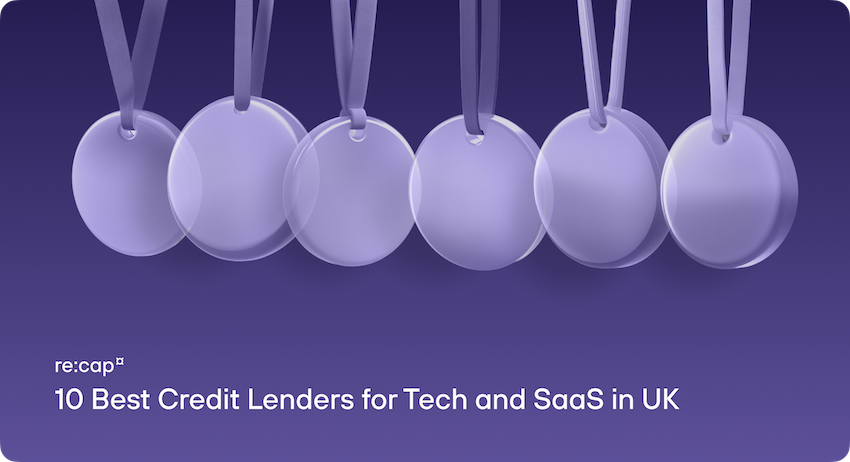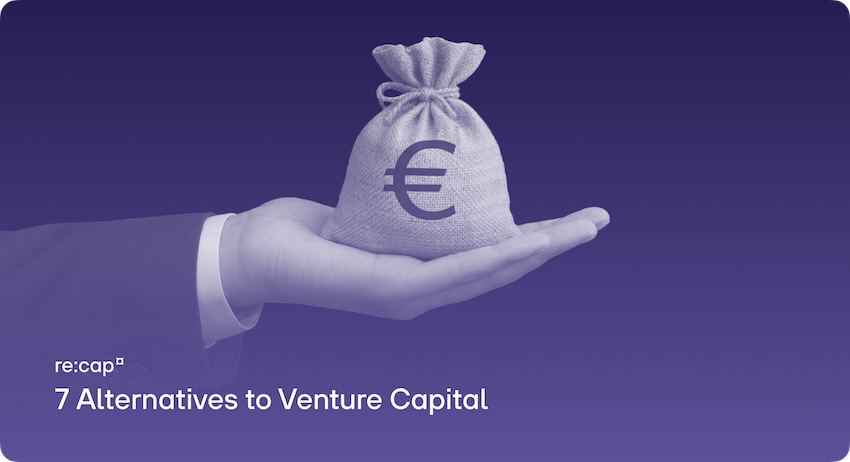Are you a SaaS or subscription-based startup considering recurring revenue financing (RRF)?
Selecting the right funding option can be quite the process. You have to weigh the pros and cons of different funding options like venture capital, venture debt, revenue-based financing, or other alternative funding options isn’t easy. And you have to convince your stakeholders (VC investors) to use recurring revenue financing.
Let’s dive into the most important questions and aspects of recurring revenue financing and then see how we can answer the most common questions asked by VCs when startups are looking to use RRF. What you'll learn in this article
- How recurring revenue financing works
- What criteria and aspects are important to know as a company using recurring revenue financing
- Answers to questions investors might have if a startup considers using recurring revenue financing
TL;DR
- Recurring revenue financing gives SaaS companies fast, non-dilutive capital based on their ARR: no equity, no warrants, no strings.
- Ideal for predictable growth, RRF is used to fund scalable investments without waiting for VC rounds or giving up control.
- Compared to revenue-based financing or traditional loans, RRF offers fixed terms, flexible limits, and a faster underwriting process focused on revenue data not assets.
What is recurring revenue financing?
With recurring revenue financing Software-as-a-Service (SaaS) and subscription-based companies receive debt capital based on their recurring revenue streams.
The amount of finance and the interest rates are based on the amount of recurring revenue and remain the same over the entire repayment period. It’s usually based on the Annual Recurring Revenue (ARR). The ARR serves as a limit on how much capital the company can finance. For larger ticket sizes venture lending might be a good alternative.
RRF: debt based on recurring revenue
Recurring revenue loans are particularly interesting for companies with predictable revenue that want to grow their business. It is an opportunity for them to grow without giving up any of their ownership stake in the company – it’s non-dilutive.
Another funding option relying on revenue is revenue-based financing (RBF). With RBF, the investors get a fixed monthly percentage of a company's revenue in return for their investment. The amount usually is capped and ranges from 1.5 to 3 times the initial investment.
What is Annual Recurring Revenue (ARR)?
Annual recurring revenue is a metric associated with SaaS businesses. ARR represents the predictable and recurring subscription revenue that a company expects to receive annually from its customers.
Interested in your funding scenario?
Get access to re:cap and calculate your funding terms or talk to one of our experts to find out how we can help you with our tailored debt funding.
Calculate your funding termsThe formula to calculate ARR
The formula to calculate ARR is: Monthly Recurring Revenue (MRR) * 12
For example, if a company has 1,000 customers and every customer pays a monthly fee of €5,000 it has a MRR of €5m and an ARR of €60m.
Whereas ARR looks at revenue yearly, MRR looks at revenue every month.
ARR is valuable because it represents the recurring revenue that a company can count on, usually based on long-lasting contracts. It provides a more predictable and stable financial outlook.
Software-as-a-Service businesses track their ARR (and let’s assume it’s all of them) to assess their growth over time.
Increasing ARR indicates that a company is successfully acquiring new customers, expanding existing relationships, or upselling additional services. Decreasing ARR means a company loses customers due to churn or downgrading customers to less valuable contracts.
What impacts the ARR?
When is revenue recurring?
Recurring revenue is a company's income that is expected to continue and is generated through ongoing, predictable payments.
This revenue model is characterized by customers making regular payments at consistent intervals, e.g., monthly, quarterly, or yearly.
Unlike one-time transactions, where a customer makes a single purchase, recurring revenue models involve continuous, often subscription-based, relationships between the business and its customers.
Types of recurring revenue are
- Subscription services
- Membership fees
- Licenses renewals
- Maintenance and support contracts
- Retainers
- Automatic reordering
Recurring revenue is highly valued by companies since it provides them with a predictable and stable income stream. It helps companies better forecast their future revenue and plan for growth.
Additionally, businesses with a significant amount of recurring revenue may be more attractive to investors, as it demonstrates customer loyalty (low churn rates) and a solid foundation for sustained financial performance.
Recurring revenue financing as alternative funding option
Classic corporate funding relies on known instruments like loans and subsidies, typically provided by established financial institutions like banks or equity and debt funds.
Usually, those traditional providers look at tangible assets (machines, real estate, vehicle fleet) and evaluate business models that are already profitable and have been operating successfully on the market for many years.
Recurring revenue loans
With recurring revenue loans it’s different. It is an alternative funding instrument. Providers, usually fintechs, thoroughly assess a company's business by treating customers and revenue streams as tangible assets.
Those fintechs focus on data and digitization and assess risk profiles and the future growth of SaaS companies. Usually, the underwriting models of banks are not able to do that.
The business model of those kinds of tech startups operates outside their frame.
Benefit of using recurring revenue financing
- Recurring revenue financing is completely non-dilutive: companies do not have to sell their share in return for equity. Also, there are no warrants, covenants, or personal guarantees included.
- Recurring revenue loans leave you in control: You don’t have to give up any of your ownership stakes in the company and stay in full control where your company is headed.
- Recurring revenue financing is based on your predictable cash flow from ARR, which makes it much faster to access since you don’t have to negotiate things like company valuation. The investment decision is based on bare KPIs.
Summary: Recurring revenue financing
Recurring Revenue Financing (RRF) is a non-dilutive funding method tailored for SaaS and subscription-based businesses. It allows companies to raise debt financing based on their predictable, recurring revenues.
Usually, it is calculated using Annual Recurring Revenue (ARR). Unlike traditional loans, RRF is based on forward-looking data such as customer contracts and revenue streams, making it ideal for growing companies without tangible assets.
The financing terms are fixed over the repayment period. They offer stability and speed without giving up equity or control.
This model differs from revenue-based financing (RBF), where repayments are variable and tied directly to a percentage of monthly revenues. With RRF, startups can access up to a certain amount depending on ARR, and the limit grows with the business.
It's particularly useful for funding predictable, ROI-driven investments like sales, marketing, or tech upgrades. Compared to equity funding, RRF is faster, more flexible, and does not dilute ownership.
Q&A: Recurring revenue financing
What is recurring revenue finance?
Recurring revenue financing (RRF) is a non-dilutive funding model that provides capital to SaaS or subscription-based companies based on their predictable, recurring revenue streams.
Instead of relying on physical assets or equity, lenders assess a company’s revenue data, especially Annual Recurring Revenue (ARR), to determine how much financing they can offer. It’s fast, flexible, and founders don’t have to give up ownership.
How does ARR financing work?
ARR financing works by using a company’s Annual Recurring Revenue as the basis for a loan. For example, if your ARR is €2 million, a financing provider might offer you a percentage of that, say, up to €500,000.
The loan terms are fixed (interest, repayment period), and repayments happen independently of your monthly revenue fluctuations. This gives you predictable cash without selling shares or negotiating a valuation.
Interested in your funding scenario?
Get access to re:cap and calculate your funding terms or talk to one of our experts to find out how we can help you with our tailored debt funding.
Calculate your funding terms

.gif)








